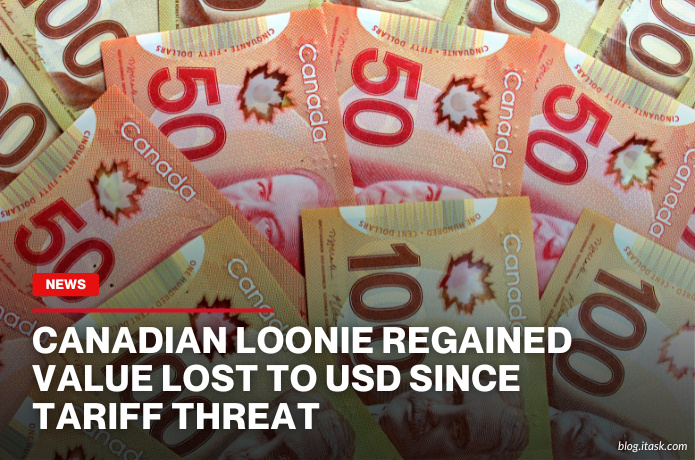Canadian Loonie Regained Value Lost To USD Since Tariff Threat
Canadian Loonie Regained Value Lost To USD Since Tariff Threat

The Canadian dollar, known as the loonie, has bounced back from its earlier losses against the U.S. dollar, regaining value lost since the U.S. tariff threats in late 2024. According to BMO Capital Markets, the loonie strengthened to its best level since November 25, 2024, briefly trading below $1.40 USD, or above 71.5 U.S. cents. This recovery follows a period of decline that began in 2021 and accelerated with the U.S. administration's tariff threats.
The loonie's rebound is attributed to a combination of factors. BMO's Chief Economist, Douglas Porter, notes that the U.S. dollar had surged through early 2025 but has since retreated, contributing to the loonie's gains. Additionally, Canadian economic data has been more robust than anticipated, with political and trade uncertainties easing, especially after the recent federal election.
While the loonie has recovered losses since November, it remains weaker compared to its 2021 levels. The earlier depreciation was due to a combination of political uncertainty, including the resignation of Canada's Prime Minister, and U.S. tariff threats. However, the recent stabilization suggests that the worst-case scenarios feared by markets have not materialized.
The Bank of Canada's (BoC) recent rate cuts, aimed at countering potential economic fallout from tariffs, may now be under scrutiny. With the loonie's recovery and tariffs being less severe than anticipated, BMO suggests that the BoC's actions might have been premature. The central bank may need to consider tightening monetary policy if inflationary pressures persist.
Looking ahead, the loonie's trajectory will depend on various factors, including global economic conditions and commodity prices. While the recent gains are encouraging, ongoing trade negotiations and potential shifts in U.S. policy could influence the currency's performance. Investors and policymakers will need to remain vigilant in navigating these uncertainties.
In summary, the Canadian dollar has shown resilience, regaining value lost during a period of heightened trade tensions. This development offers a more optimistic outlook for Canada's economy, though challenges remain on the horizon.
